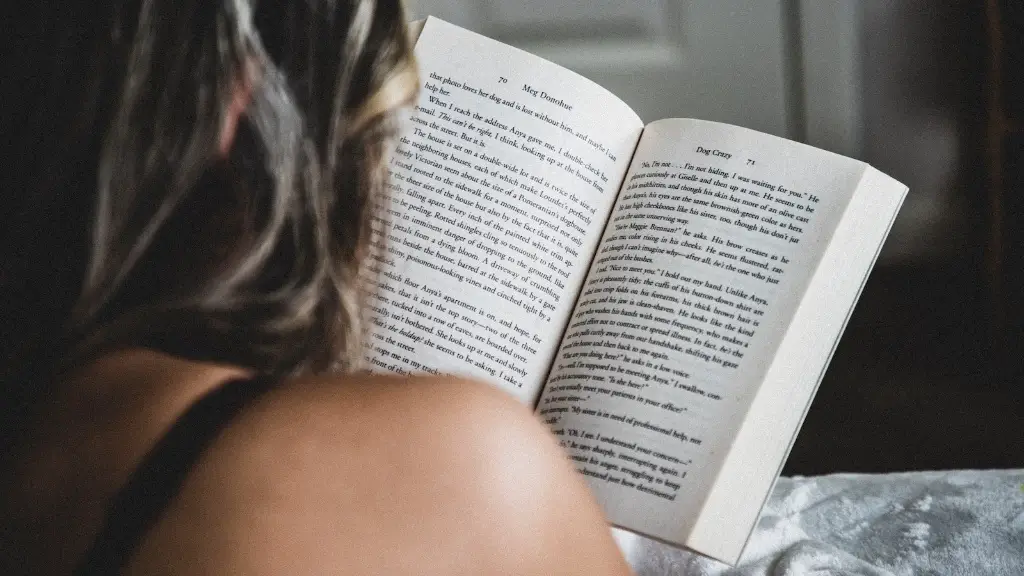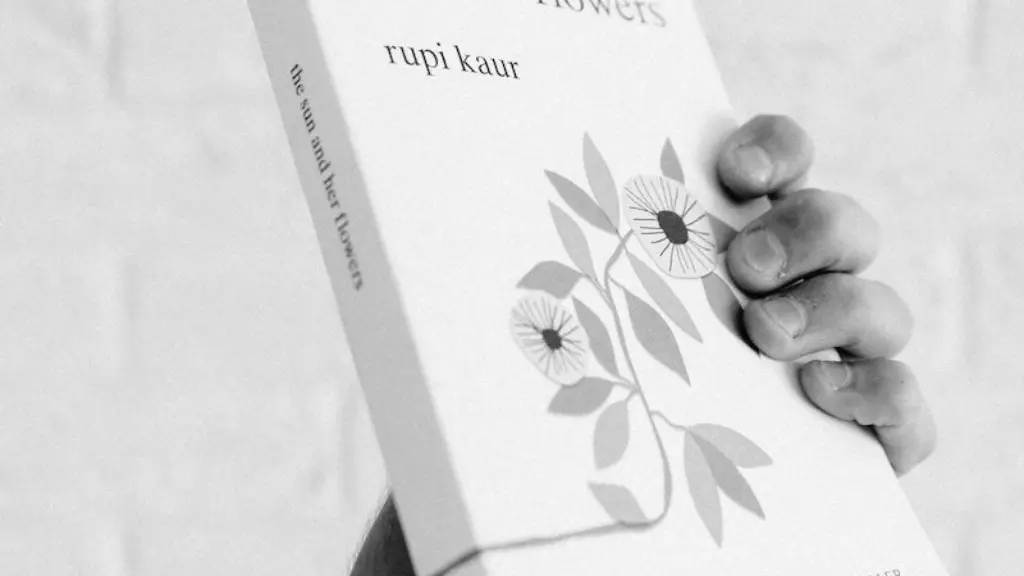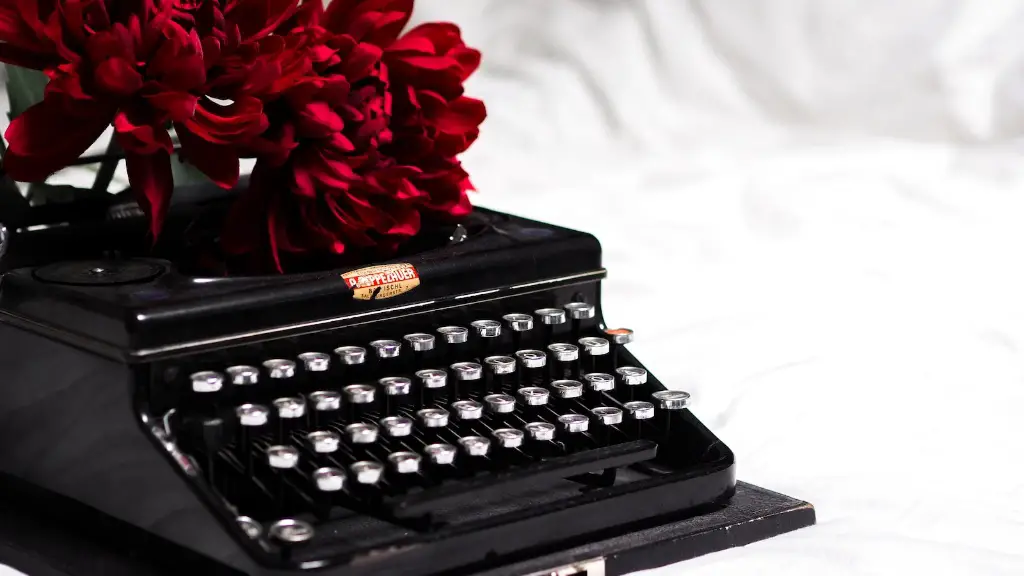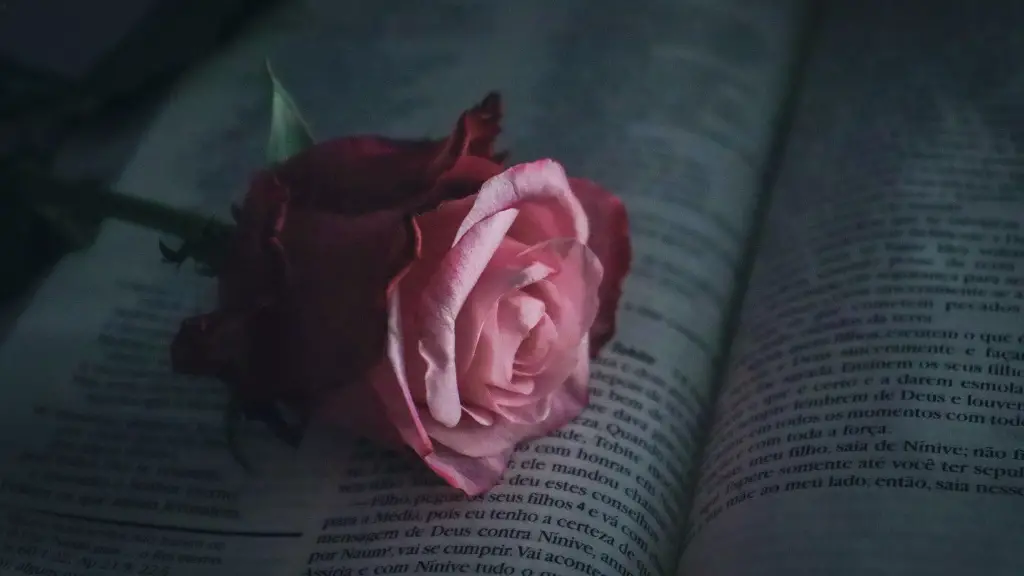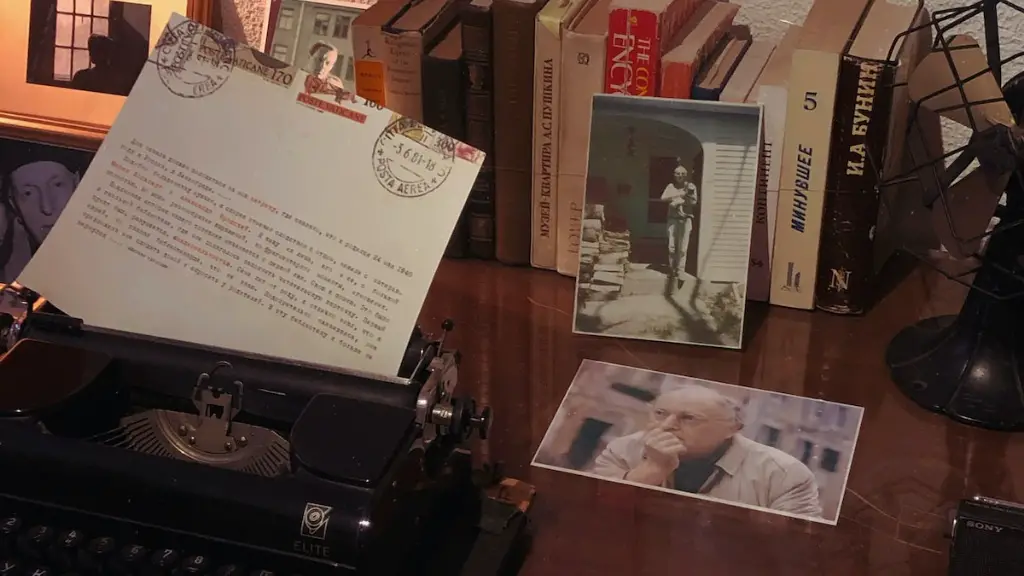Lyrical poetry is poetry that expresses the inner feelings, emotions and ideas of a poet. It is often written in the form of narrative story telling and communicates complex emotions in a simple and emotive way. Essentially, lyrical poetry is a form of creative writing dedicated to understanding and expressing emotions. A classic example of lyrical poetry is William Wordsworth’s ‘I Wandered Lonely as a Cloud’.
For centuries, lyrical poetry has been used to communicate ideas and thoughts in a powerful way. It has been used to highlight the struggles of life, the beauty of nature, the power of the human spirit and the joys of life. In its simplest form, lyrical poetry is an expressive form of writing used to communicate emotion. It can be used to express subjective feelings about life, love, family and nature.
At its core, lyrical poetry consists of a few key elements. It is distinguished by its use of metaphor and imagery, which are elements used to bring the writer’s feelings to life. Metaphors are figures of speech that can be used to make a comparison between two unlike objects. Imagery is used to help the reader visualize the scenes being described. In addition, lyrical poetry usually has a strong narrative structure, allowing the reader to follow a story while also being taken on an emotional journey with the poet.
The use of imagery, metaphors and narrative structure give lyrical poetry its power to evoke emotion in the reader. It is this emotional connection that has attracted people to lyrical poetry for centuries. Through its use of metaphor and imagery, lyrical poetry can paint vivid pictures in the reader’s mind. In addition, the narrative structure of lyrical poetry allows the reader to follow the story as it is being told. This helps to build a connection between the reader and the poet, and makes lyrical poetry an effective way for writers to express their feelings and ideas.
Lyrical poetry is a unique form of literature that has been used to express the complexities of human emotions for centuries. When used effectively, it can evoke strong emotions in the reader. By combining imagery, metaphors and narrative structure, lyrical poetry can be a powerful and emotive form of writing.
Power of Poetry
Lyrical poetry has a unique power to communicate feelings and emotions. It has the ability to take an ordinary situation and express the underlying emotions of the poet. It can also be used to evoke a range of emotions in the reader, and can be a powerful tool to understand and explore the complexity of humanity. Poetry can also be used to find beauty in the mundane, reminding us of the beauty in even the most ordinary of things.
Poetry has long been used as a source of solace and comfort. By expressing the emotions of a poet, lyrical poetry can often provide readers with a sense of understanding or connection. It is a powerful tool to bring people together by sharing experience and emotion. Whether it is sorrow, joy or anything in between, lyrical poetry can be a powerful way to put feelings into words.
Poetry can also be a liberating experience for both the poet and the reader. It can help to free one from the constraints of everyday life, allowing the poet to express their feelings and ideas in an inventive and creative way. In addition, the use of lyrical poetry can often help the reader think more deeply and critically about the topics being discussed. By helping to break down complex emotions into easily understandable language and imagery, lyrical poetry can help to broaden a reader’s understanding of a situation or experience.
Forms of Lyrical Poetry
Lyrical poetry comes in a variety of different forms and styles. One of the most common forms of lyrical poetry is the sonnet, which is a 14 line poem that follows a rhyme scheme and metrical pattern. Other common forms of lyrical poetry include the ode, elegy, ballad and lyric. Each of these forms has its own distinct characteristics, but all share the common goal of expressing emotions in an imaginative and emotive way.
It’s important to note that lyrical poetry is not limited to a certain form. Poets can express their feelings and ideas in any way they like. As long as the poem contains elements of metaphor, imagery and narrative structure, it can be considered lyrical poetry. From free verse to experimental forms, there are no limits to the ways in which lyrical poetry can be expressed.
Modern Lyrical Poetry
In modern times, lyrical poetry has continued to be an important form of expression. In today’s world, where emotions often go unexpressed or misunderstood, lyrical poetry can be a powerful way to communicate ideas and feelings. Whether it’s a rap or a spoken word poem, lyrical poetry can be found in many forms and it continues to be an important part of the modern poetic landscape.
In recent years, the rise of social media has given rise to the popular ‘spoken word’ poetry movement. On platforms such as YouTube, Twitter and Instagram, poets are able to share their lyrical poetry with a global audience. Through these platforms, poets can connect with a wider audience and express themselves in an inventive and powerful way.
With the rise of social media, lyrical poetry has become more accessible to broader audiences. This has opened up the possibilities of lyrical poetry, and has allowed more people to relate to powerful emotions being expressed in an emotive way. Through these platforms, lyrical poetry can reach a wider audience than ever before and help to spread powerful emotions and ideas.
Analysis of Lyrical Poetry
Lyrical poetry is a powerful form of writing that can evoke strong emotions in the reader. It is distinguished by its use of metaphor and imagery, as well as its narrative structure. Through its use of symbolism, it can bring to life the hidden emotions of the poet and speak to issues of the day. In today’s world, lyrical poetry can be found in a variety of forms and continues to be an important form of expression and communication.
In addition to its emotive power, lyrical poetry can also provide a unique analytical opportunity for readers. Through the use of metaphors, readers can explore the deeper meaning of a poem and gain a better understanding of the emotions being expressed. By breaking down the imagery used to describe scenes and emotions, readers can explore the complexities of the human condition.
Lyrical poetry can also provide a window into the past. By reading and analyzing the work of past poets, we can gain a better understanding of the issues they were dealing with. This can help us gain insight into topics that have been long forgotten, as well as provide insight into current day issues. Through careful analysis of lyrical poetry, we can gain a better understanding of the world around us.
Conclusion
Lyrical poetry is a powerful form of writing that has been used for centuries to express the complex emotions of the poet. By combining narrative structure, symbolism and imagery, lyrical poetry can bring to life the hidden emotions of the poet, and evoke strong feelings in the reader. It can also be used to explore and analyze the complexities of the human condition, as well as providing a window into the past. In today’s world, lyrical poetry continues to be an important form of expression and communication.
